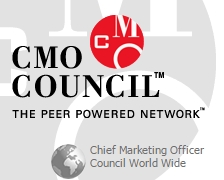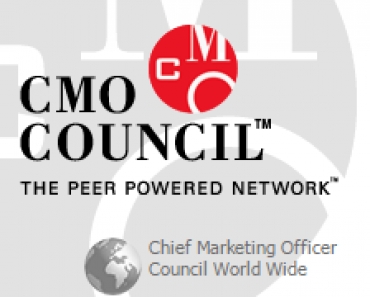
 More Than Half of Marketers Say Their Demand Generation Strategies Don’t Measure Up and Are Less Than Effective, Reveals New CMO Council Study
More Than Half of Marketers Say Their Demand Generation Strategies Don’t Measure Up and Are Less Than Effective, Reveals New CMO Council Study
Lack of Consensus on What Is Really a Valued Lead
Call it a lead, opportunity or prospect. No matter what the term, sales organizations can never get enough new business contacts from their marketing groups. The question is how wisely they are used and whether that new point of customer access is qualified, primed and ready to write orders.
A detailed study from the Chief Marketing Officer (CMO) Council and the Content ROI Center finds that most companies are struggling to originate compelling thought leadership content that engages the right customer decision makers and produces quality lead flow that can advance sales performance. Not only do marketers lack unanimity on what constitutes an actual sales lead, but they also are not teaming effectively with sales and business development groups. In most cases, these internal stakeholders lack synergy and alignment on demand generation strategies, themes and advocacy agendas.
Entitled “Lead Flow That Helps You Grow,” the North America-based research was conducted in partnership with NetLine Corporation, a leader in content syndication for lead generation. Key findings from a survey of more than 200 marketing leaders across many industry sectors in North America in Q2 of 2015 reveal that:
• Only 12 percent of marketers believe they have high-performance content marketing engines that are strategically programmed to target the right audiences with relevant and persuasive content. They are also not using multiple distribution and syndication channels for maximum reach, impact and return.
• Most view their content marketing process as ad hoc, decentralized and driven by internal stakeholder interests.
• Just 21 percent of marketers say they are total partners with their sales and business development counterparts when it comes to developing the strategy and measuring the effectiveness of demand generation programs.
• Some 22 percent of marketers believe sales teams are too often a roadblock and detractor and are rarely a contributor to the content marketing value chain.
“Generating demand and ensuring the consistent flow of high-quality, actionable leads is paramount to the success of today’s business-to-business marketer,” notes Donovan Neale-May, Executive Director of the CMO Council. “Sales enablement and pipeline performance remain key mandates as organizations look to fine-tune their content marketing practices to be high-performance growth engines.”
While 75 percent of marketers view the number of downloads or registrations as the most important measure of content marketing success, they admit to many key failings that impact this metric. The top five include:
• Not developing customized content for target audiences (48 percent of respondents)
• Not allocating sufficient budget to create engaging and authoritative content (48 percent)
• Not producing content that is relevant or meaningful to different audiences (44 percent)
• Not reaching the right decision makers across the organization (43 percent)
• Not leveraging the right distribution channels and syndication opportunities to maximize reach (39 percent)
“The quantity and quality of audience-appropriate content directly correlates to the number of leads that will end up in the sales pipeline,” explains Robert Alvin, CEO and Founder of NetLine Corporation. “Content demand generation programs start with the asset but must ensure proper consumption. Syndication and distribution to target audience groups with measurable results is indispensable for a successful content strategy.”
According to 46 percent of the 600-plus marketing decision makers taking part in the CMO Council’s “State of Marketing 2014” study, their greatest accomplishment in the past year was the realignment of marketing to better support sales and improve selling cycles. Nearly one in three marketers admits that maintaining a high-quality sales pipeline is one of their top senior management mandates for the coming year, and half say that lead generation and qualification is the area of business need that will receive the most resources. But despite the improvements in processes, goals and intentions to optimize lead generation and yield, only one in four marketers believes they have made strides in implementing demand-generation systems to better target, acquire, qualify and convert business.
The report also includes the findings of an online survey of 213 respondents (46 percent from companies with $1 billion or more in annual revenue) who provided responses to a wide range of questions, including:
• How would you rate your organization’s content marketing performance relative to the caliber and incidence of lead flow?
• Do you have formalized content marketing strategies and protocols in place?
• How well are you managing and optimizing content marketing processes and practices?
• What are the primary content marketing tactics and programs used by your company?
• Are you fully leveraging all of your content marketing assets, formats and channels to maximum effect? If not, why not?
• How are you tracking and measuring end-to-end content marketing performance?
• Where are there deficiencies, and how are they being addressed?
• How are you currently packaging, promoting and syndicating marketing content?
• Which areas of content marketing generate the most lead flow, and what system do you have in place to nurture and convert these leads?
